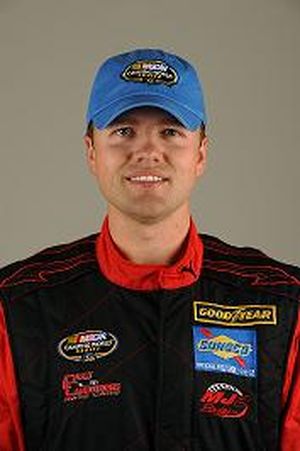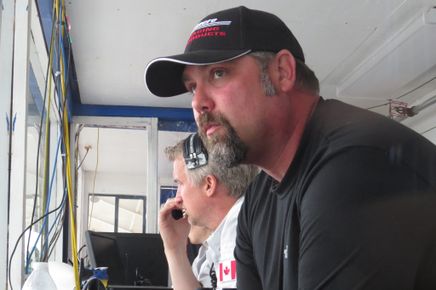NASCAR Camping World Series West News & Notes - Portland
As the series heads to Portland (Ore.) International Raceway this week for the Bi-Mart Salute to the Troops 125 on Sunday, July 19, some of the series veterans may be looking to Oregon's Jim Warn for advice on how to get around the 1.98-mile road course that the series last visited in 1986.
Courtesy: NASCAR Media Relations
DAYTONA BEACH, Fla. — As a rookie in the NASCAR Camping World Series West last season, Jim Warn (No. 10 MJ2 Racing/GPI Performance.com Chevrolet) spent a lot of time becoming familiar with race tracks he had never seen before and asking veteran drivers for tips on the fast way around the track.
As the series heads to Portland (Ore.) International Raceway this week for the Bi-Mart Salute to the Troops 125 on Sunday, July 19, some of those veterans may be looking to Warn for advice on how to get around the 1.98-mile road course that the series last visited in 1986.
Warn, who began his racing career competing in Sports Car Club of America events at Portland International Raceway, is one of the few active drivers in the NASCAR Camping World Series West who has raced there.
“It’s nice to get back to where you started,” said the 25-year-old driver from nearby Aurora, Ore. “I haven’t done hardly any racing there since I got out of road racing four or five years ago. So, it’s definitely good to go back and race again where you started.”
The picturesque facility has some specific features, Warn recalled. “Portland is an interesting track,” he said. “It’s very flat. There’s no banking at all. If anything, it’s kind of off-camber stuff on a couple of corners. It’s a real momentum track. You’ve got to be real careful about not bogging the car down, just to keep your momentum up. There’s a lot of good passing. The track doesn’t have any real, real unique features, but it’s got a lot of little things that add up to making a good lap around there.”
Warn anticipates his experience on the Portland track will be of benefit in his return. “It’s definitely a place that takes a little bit of time to get used to,” he said.
“It’s kind of technical like Miller (Motorsports Park),” Warn said in reference to the road course in Tooele, Utah that the series visits each year. “But Portland’s pretty narrow. It’s not as wide as Miller. It just takes a while to kind of get your feet under you there and feel comfortable in the car and know how to keep the momentum going in some of the really tight corners.”
Drivers who have never been to the track may not realize how much braking is needed, according to Warn.
“I think their biggest surprise will be just how much braking you have to use there,” he said. “A lot of those corners, they look like they can take more than they really can. You’ve really got to be up on the wheel back there in the carousel, especially down into the chicane. I think the chicane will be where it can ruin a lot of people’s day. Getting through there, it will be interesting to see.”
There may be some other surprises to first-time visitors to the track, as well, Warn said. “You would be surprised how much you’re on the rumble strips there,” he said. “You really kind of toss the car around a little bit. It’s not similar to any other road course we go to. All of them are pretty much different. They all have their own characteristics. It’s just going to be one of those things of get the car going and figure out what you’ve got and it will slowly come as practice goes on.”
Although he has plenty of experience at Portland, Warn acknowledged it will be a big adjustment to transition from the cars he drove there previously to the heavy stock cars of the NASCAR Camping World Series.
“It’s a pretty big swing from what I drove before,” Warn said. “The cars I drove there before were a third of what these cars are. These things are basically three times as big. You use almost three times as much braking. It will definitely be different.”

